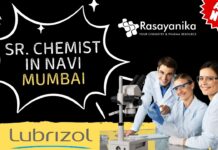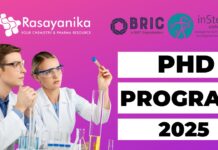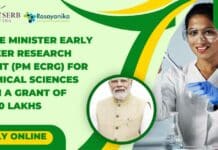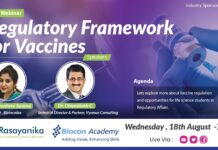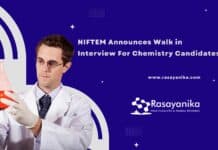Together, Teva Pharmaceuticals is on a mission to make good health more affordable and accessible, to help millions around the world enjoy healthier lives. It’s a mission that bonds our people across nearly 60 countries and a rich, diverse variety of nationalities and backgrounds. MSc Chemistry R&D vacancy details are attached below. Please go through the same and apply online.
Role – Physical R&D Researcher II
Location: Greater Noida, India, 201306
Job Id: 50903
Responsibilities for MSc Chemistry R&D vacancy –
- Independently plan and execute the polymorph screening
- In-depth Knowledge on polymorph screening
- Minimum 4 years’ experience in polymorph screening
- Patents on polymorph
- Experience in solubility curve , meta stable Zone width , Seeding experiments
- Experience in different crystallization tools like HTS, Crystal 16, crystalline , parallel crystallizer
- Knowledge on COSMOtherm and Molecular modeling software
- Characterization of polymorph with XRD, DSC, TGA, Microscope ,DVS
- Need to coordinate with patent team on IP filing
- Need to coordinate with CRD.
Experience and qualifications –
- 5+ yrs of exp
- BSc/ MSc – Chemistry
We are excited to share some interview questions and answers that will help you prepare effectively for your upcoming interview. By familiarizing yourselves with these questions and crafting
thoughtful responses, you’ll be well-equipped to excel during the interview for the MSc Chemistry R&D vacancy. Best of luck, and we’re here to support your success!Question 1: Can you describe your experience in polymorph screening and why it’s important in pharmaceutical research?
Answer: Polymorph screening is a critical process in drug development where different crystalline forms of a compound are identified. These forms can have distinct physical properties, including solubility and stability, which can significantly impact the drug’s efficacy and manufacturing process. I have over 4 years of experience in polymorph screening, during which I’ve conducted experiments using techniques such as solubility curve analysis, meta stable zone width determination, and seeding experiments. This understanding of polymorphs helps optimize drug performance and ensures a robust formulation.
Question 2: Could you discuss a specific project where you successfully applied molecular modeling software and COSMOtherm in polymorph screening?
Answer: Certainly. In a recent project, I utilized COSMOtherm and molecular modeling software to predict the thermodynamic stability of different polymorphs. By modeling various crystal structures and comparing their relative stabilities, I identified the most stable form, which was subsequently validated experimentally. This approach not only saved time and resources but also enabled a more targeted experimental design, ultimately enhancing the efficiency of our polymorph screening process.
Question 3: How do you ensure the quality and reliability of the data obtained from characterization techniques like XRD, DSC, and TGA?
Answer: Ensuring the quality of characterization data is crucial for accurate analysis. When working with techniques like X-ray diffraction (XRD), differential scanning calorimetry (DSC), and thermogravimetric analysis (TGA), I follow strict protocols for sample preparation and instrument calibration. I maintain thorough documentation of experimental parameters, instrument settings, and data interpretations. Additionally, I cross-validate results by employing multiple techniques and replicate experiments to enhance reliability and confidence in the obtained data.
Question 4: How do you manage coordination between patent teams and the research and development team during the IP filing process?
Answer: Coordination between patent teams and R&D is essential to protect valuable intellectual property. I’ve successfully managed this by maintaining open communication channels and regular meetings. During the IP filing process, I collaborate closely with patent experts to provide them with the required technical information, experimental results, and insights. This ensures that the patent applications accurately capture the uniqueness of our discoveries while complying with legal requirements.
Question 5: Can you share an example of a challenging situation you faced during a crystallization experiment, and how you overcame it?
Answer: During a crystallization experiment, I encountered unexpected nucleation and growth difficulties that led to inconsistent results. To overcome this, I revisited the experimental setup and identified an issue with impurities in the starting material. I adjusted the purification process, optimized seeding techniques, and fine-tuned crystallization conditions. This troubleshooting approach led to the successful growth of well-defined crystals with the desired polymorphic form. The experience taught me the importance of thorough process evaluation and adaptability in achieving reliable outcomes.










